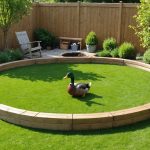Schools across the UK are reimagining education by weaving wildlife conservation into their curricula. This innovative approach nurtures a generation that values biodiversity and understands environmental stewardship. From hands-on projects in local ecosystems to integrating conservation topics across subjects, educators are inspiring students to become proactive guardians of nature. Explore how these initiatives empower young minds, fostering a deeper connection with the natural world while enhancing academic engagement. Discover the transformative impact of incorporating nature into the learning experience.
Introduction to Wildlife Conservation in UK Schools
In recent years, wildlife conservation has become an integral part of the educational experience in UK schools. This shift highlights the growing recognition of the importance of educating young minds about the natural world. By incorporating conservation topics into the curriculum, students gain a deeper understanding of the environment and the role they play in preserving it.
Dans le meme genre : Exploring Conservation Efforts: Safeguarding the UK’s Ancient Woodlands and Their Ecosystems
Current trends indicate a surge in integrating nature-based learning into school curricula. This approach not only enhances students' knowledge of wildlife conservation but also fosters a sense of responsibility towards the environment. Schools are increasingly adopting outdoor classrooms and nature walks, allowing students to connect with nature firsthand.
Educators play a pivotal role in promoting conservation awareness. By crafting engaging lessons and activities, they inspire students to appreciate the diversity of life around them. Teachers use various resources, such as documentaries, guest speakers, and hands-on projects, to bring the subject to life. This active participation helps students develop critical thinking skills and encourages them to become advocates for wildlife conservation.
Lire également : Safeguarding Shorebirds: Innovative Adaptations by UK Coastal Communities
Overall, the integration of wildlife conservation in UK schools is a promising step towards nurturing environmentally conscious citizens who value and protect the natural world.
Case Studies of Schools Successfully Integrating Conservation
Incorporating wildlife conservation into school programs has proven successful in several UK schools, with each adopting unique best practices. One noteworthy example is School A, which initiated a wildlife garden project. This initiative transformed unused school grounds into a thriving habitat for local species. Students actively participate in maintaining the garden, gaining hands-on experience in conservation practices and understanding the importance of biodiversity.
Another exemplary program is School B's collaboration with local conservation organizations. This partnership provides students with opportunities to engage in community conservation projects. By working alongside professionals, students learn about real-world conservation efforts, enhancing their knowledge and commitment to environmental stewardship.
School C has embraced an innovative approach by creating an outdoor classroom model. This model allows students to learn amidst nature, fostering a deeper connection with the environment. Lessons conducted outdoors not only cover traditional subjects but also integrate environmental education, encouraging students to observe and interact with their surroundings.
These case studies demonstrate the diverse methods schools can employ to effectively integrate wildlife conservation into their curricula. By adopting these school programs, students are empowered to become proactive participants in preserving the natural world.
Curriculum Examples Incorporating Nature and Biodiversity
Incorporating nature-based learning into various subjects can transform the educational experience. Subjects like Science, Geography, and Art greatly benefit from this integration. For instance, in Science, students can explore ecosystems and understand the intricate relationships between species through outdoor experiments. This hands-on approach deepens their comprehension of ecological concepts and the importance of biodiversity.
Geography lessons can also thrive with nature integration. By studying local landscapes and habitats, students gain a practical understanding of geographical features and environmental changes. This real-world interaction enhances their spatial awareness and appreciation for the natural world.
Art classes can creatively incorporate nature by encouraging students to use natural materials for projects or draw inspiration from the environment. This not only fosters creativity but also instills a sense of connection to nature.
Moreover, project-based learning offers unique opportunities to focus on local wildlife. Students can participate in activities like creating a wildlife mural or developing a conservation plan for a nearby park. These projects promote teamwork and critical thinking while emphasizing the significance of preserving biodiversity. Through such engaging methods, the curriculum can effectively nurture students' environmental awareness and stewardship.
Benefits of Incorporating Wildlife Conservation in Education
Incorporating wildlife conservation into education offers numerous advantages, significantly enhancing student engagement. Hands-on learning experiences, such as participating in conservation projects or maintaining a wildlife garden, captivate students' interest more than traditional classroom settings. This active involvement not only boosts motivation but also encourages students to explore and connect with the subject matter deeply.
Moreover, the integration of conservation topics aids in developing critical thinking and problem-solving skills. When students engage with real-world environmental issues, they learn to analyze data, evaluate solutions, and make informed decisions. These skills are vital for academic success and equip students for future challenges in various fields.
Additionally, fostering a sense of environmental stewardship is a crucial benefit of integrating conservation into education. By understanding the significance of preserving natural habitats and biodiversity, students cultivate a sense of responsibility towards the environment. They become aware of the impact of their actions and are more likely to advocate for sustainable practices.
Overall, these educational benefits not only enrich students' learning experiences but also prepare them to be proactive, environmentally conscious citizens. By embedding conservation in education, schools play a pivotal role in shaping a generation that values and protects the natural world.
Interviews with Educators and Conservationists
Educator Insights reveal a blend of challenges and successes in integrating wildlife conservation into school curricula. Teachers often find that limited resources and time constraints pose significant hurdles. However, they also report that students' enthusiasm and curiosity about the natural world can drive the success of these programs. Educators highlight the importance of creative lesson planning and community partnerships to overcome obstacles.
From the Conservation Perspectives, experts emphasize the crucial role education plays in fostering environmental awareness. Conservationists argue that early exposure to conservation topics can instill lifelong values in students. They advocate for immersive experiences, such as field trips and interactive projects, to deepen students' understanding and commitment to preserving biodiversity.
Expert Interviews provide valuable recommendations for schools aiming to enhance their conservation programs. These include:
- Establishing collaborations with local conservation organisations for resources and expertise.
- Incorporating technology, like virtual reality, to simulate wildlife habitats.
- Encouraging student-led initiatives to promote ownership and innovation.
By combining insights from both educators and conservationists, schools can create robust programs that not only educate but also inspire students to become active participants in wildlife conservation efforts.
Challenges in Implementing Conservation Education
Implementing conservation education in schools is not without its hurdles. One of the primary implementation challenges is navigating curriculum constraints. Schools often find it difficult to integrate new subjects due to rigid educational frameworks. This can limit the time and attention given to conservation topics, making it challenging to cover them comprehensively.
Resource limitations also pose a significant barrier. Many schools lack the necessary funding to support outdoor projects, such as creating wildlife gardens or organizing field trips. These activities require financial investment for materials, transportation, and sometimes specialized personnel, which can strain already tight budgets.
Moreover, schools face challenges in acquiring adequate resources, like educational materials and tools, to effectively teach conservation. The lack of access to such resources can hinder the practical implementation of conservation education, limiting hands-on experiences that are crucial for engaging students.
Despite these challenges, schools can explore partnerships with local conservation organizations to access resources and expertise. By fostering collaborations, schools can creatively navigate curriculum constraints and resource limitations, ensuring that conservation education remains a vibrant part of the learning experience.
Resources and Further Reading for Educators and Parents
To effectively integrate wildlife conservation education, educators and parents can access a variety of educational resources and conservation materials. These resources provide valuable information and tools to enhance learning experiences.
Several organizations support wildlife conservation education by offering materials and guidance. The Royal Society for the Protection of Birds (RSPB) and the Wildlife Trusts are prominent examples. They provide comprehensive resources, including lesson plans and interactive activities, to help educators incorporate conservation topics into their curriculum.
For those seeking further reading, several books and articles delve into nature-based learning. Titles like "Last Child in the Woods" by Richard Louv and "The Nature Principle" offer insights into the benefits of connecting children with nature. Articles in journals such as "Environmental Education Research" explore innovative approaches to teaching conservation.
Online platforms and tools also play a crucial role in supporting educators. Websites like Eco-Schools and Nature Detectives offer a wealth of information, including downloadable resources and virtual activities. These platforms enable educators to enrich their curriculum with engaging content, fostering a deeper understanding of wildlife conservation among students.










